Every year brings a new crop of preoccupations in the garden, such as: Will the beschorneria choose this spring for their first bloom? How about the puya in the gravel garden? Feel like blooming this year? Some plants really do take their sweet time. Judging by my own temperament, I’d say garden makers have a unique blend of philosophical stoicism that co-exists uneasily with a raging, barely controlled impatience.

At Annie’s Annuals & Perennials/AAP over the weekend, impatience had the upper hand. I splurged on Puya mirabilis, a smaller puya reputed to be the one for blooming at a young age. I don’t remember which one I planted in the gravel garden and won’t know until it blooms, which may be eons away still.
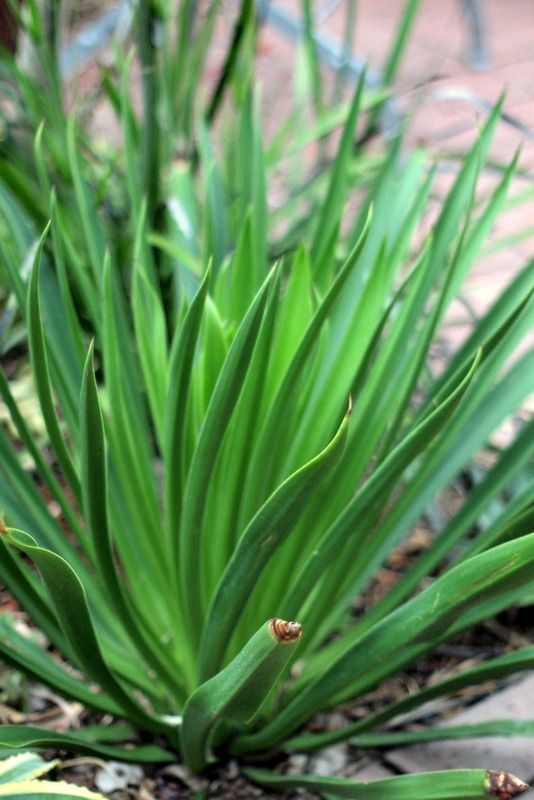
Still waiting for blooms on this beschorneria, and I’m pretty sure we can write off 2014. AAP’s display gardens had enormous, towering bloom trusses that had to be tied to the fence for support.
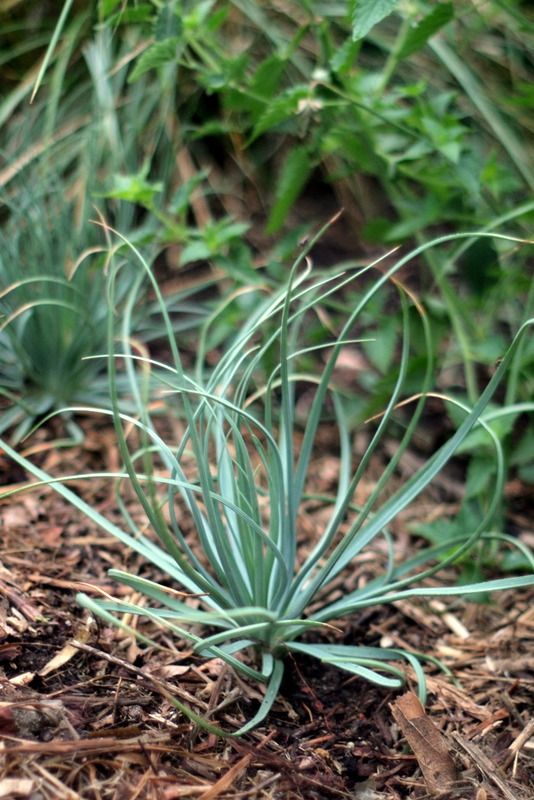
I’ve been trying to establish asphodels for some time and finally have a few clumps with potential. This morning I noticed a bloom snout in one of the clumps, which is almost unbearably exciting. I think too often I subject potentially tough plants to overly harsh conditions initially, when what they need is some babying for a good start. And I’m trying to remember to mulch like crazy, which is easy this year since there’s piles of it. These are Asphodeline lutea (syn. Asphodelus luteus). Enormous clumps were in bloom in AAP’s display beds. I knew they were tall plants in bloom but wasn’t sure about their width, so seeing them at Annie’s helped fill in the blanks on the eventual size of this ‘Jacob’s Rod.’ A medium-sized phormium is a good visual reference for girth. A white asphodel, Asphodelus albus, was also in bloom, and though I’ve always wanted the yellow I have to say the white is probably even more stunning. (No time for photos at AAP since it was the last stop before heading back down to Los Angeles.)
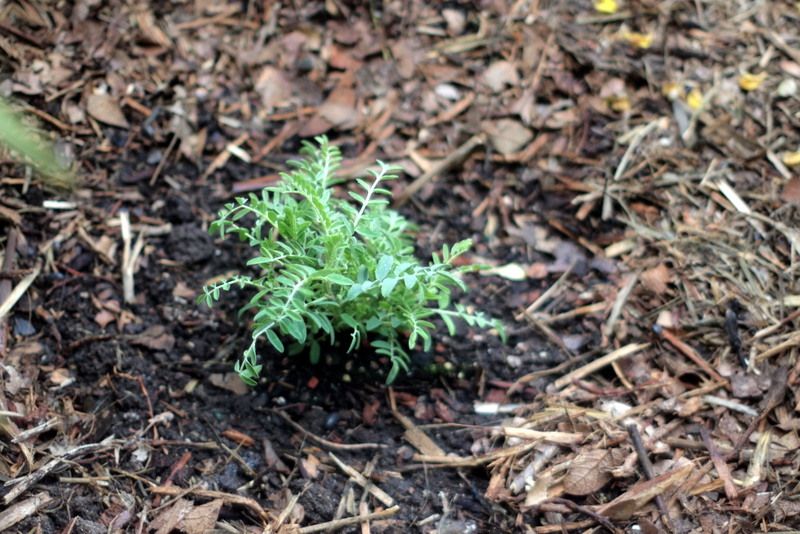
Lessertia montana made the cut for the ride home.
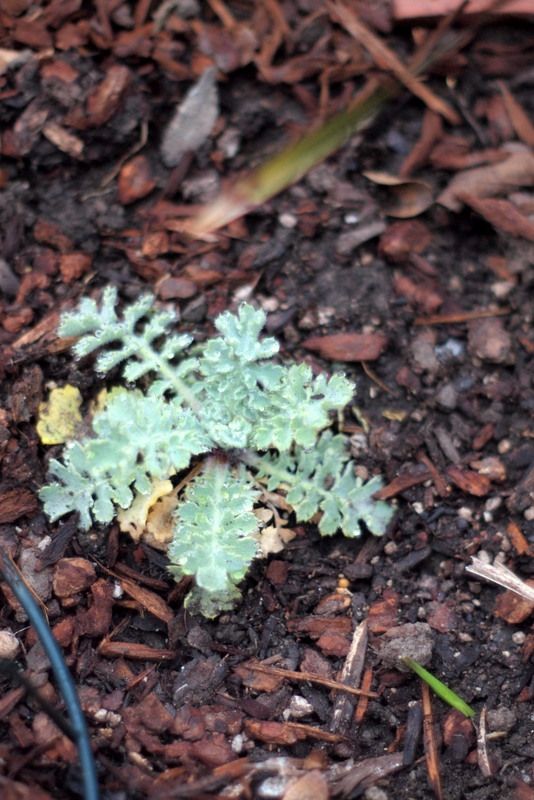
As did a couple Glaucium grandiflorum. I pulled out some of the annual poppies to find a home for these.
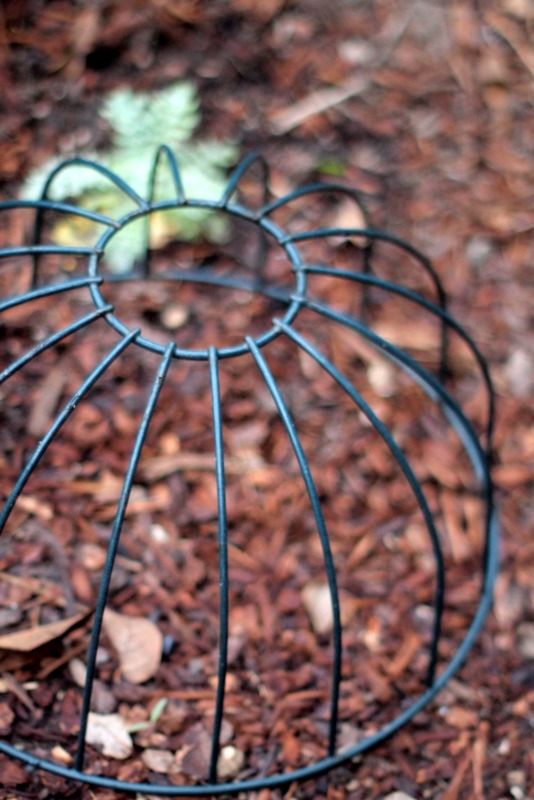
Useful for protecting small plants and young seedlings from digging cats. And to remind my itchy digging fingers that this spot is already taken.
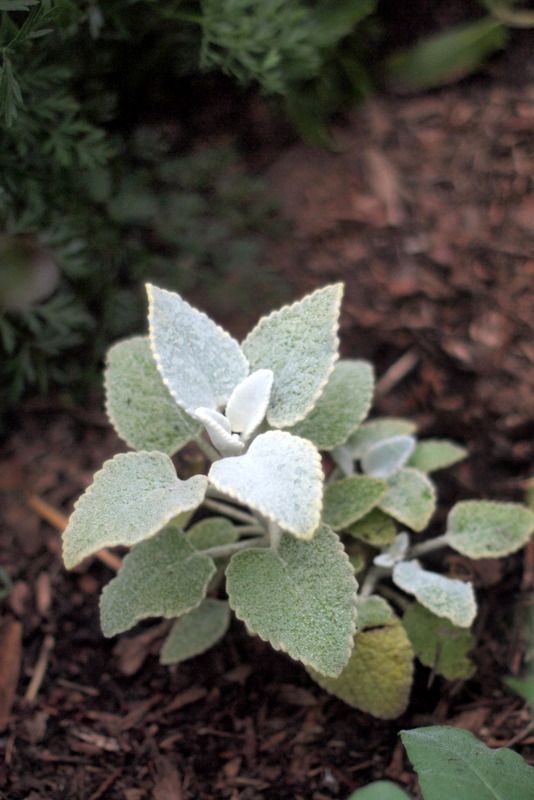
A couple self-sown sideritis turned up this spring, which I greedily potted up at first sight and just planted back into the garden yesterday. Looking at AAP’s extensive offering of sideritis, I think it’s S. oroteneriffae.
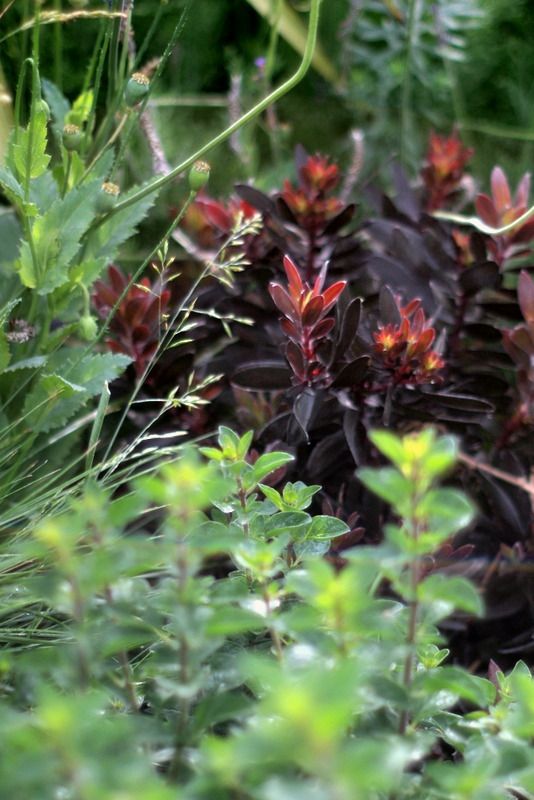
One sunny spot happened to be available near Leucadendron ‘Ebony,’ but I’d be a fool to let the sideritis crowd the young conebush, so the sideritis may have to be moved.
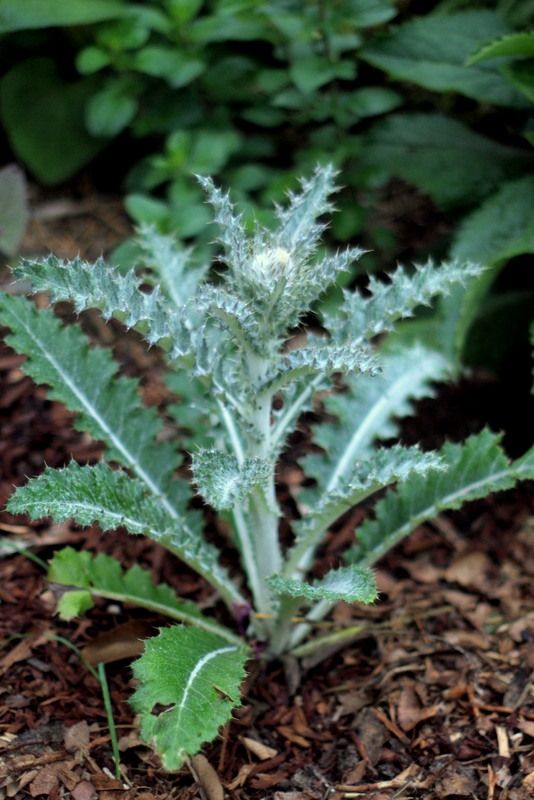
I also saw mature plants of this native thistle, Cirsium occidentale, at AAP’s last weekend. The mother plant was very short-lived in my garden, so I was surprised to find a seedling early this spring. Knock wood, this one produces a few more seedlings. (5/9/14 edited to add that this thistle died in the recent heat wave.)

Crambe maritima, hopefully a future depositor in my garden’s seed bank. Maintaining a choice and interesting crew of potential self-sowers is my favorite kind of garden making at the moment. They bring elements of surprise, serendipity, adaptability, fitting in with rainfall patterns. And let’s be honest, getting beautiful things for free never loses its appeal.

One of the surprise benefits of keeping pots near the garden proper is that occasionally plants will self-seed into the softer potting soil. In early spring I found several seedlings of nearby Eryngium padanifolium in this container of alonsoa but nowhere else in the garden. I noticed yesterday ballota had done the same thing in the container of Albizia ‘Summer Chocolate.’ I never find ballota seedlings in the garden.
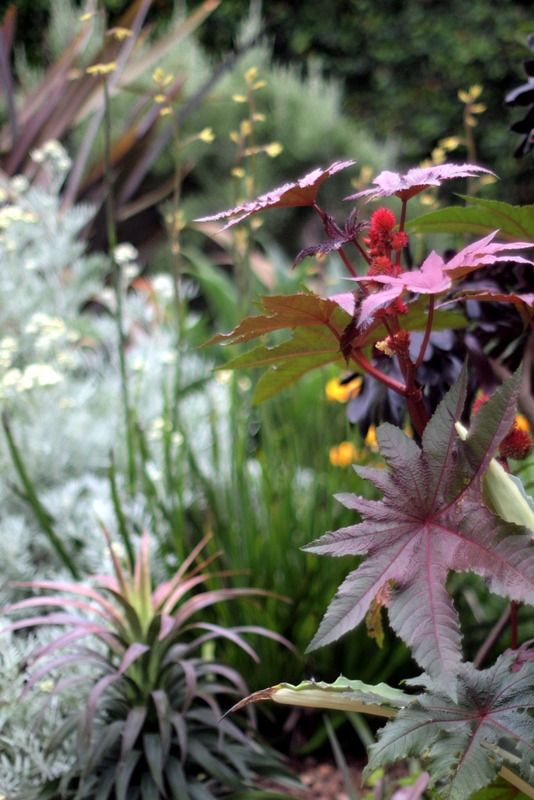
Only one plant of Castor Bean ‘New Zealand Purple’ was overwintered, so there’s very few volunteers this year.
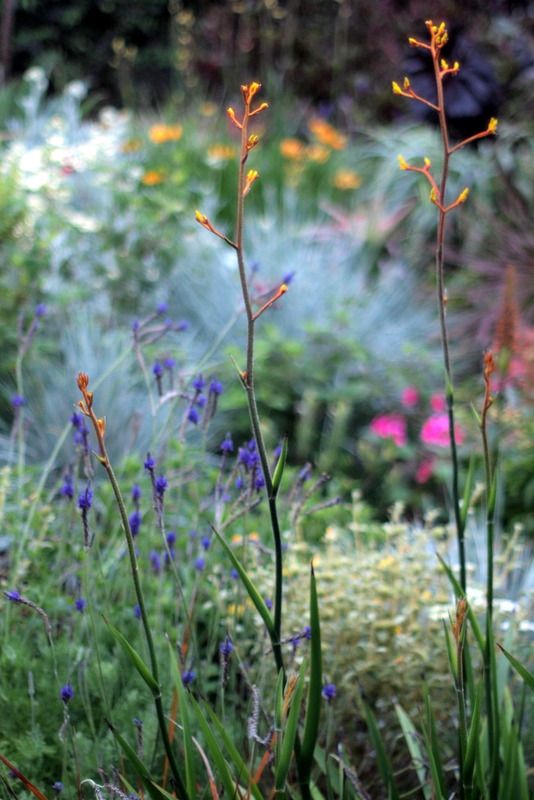
The dry-loving kangaroo paws will rule summer. A favorite for massed plantings, I like them dotted throughout the garden for their incredibly long-lasting vertical lines. The hybrids grown for compact growth don’t have the same appeal to me.
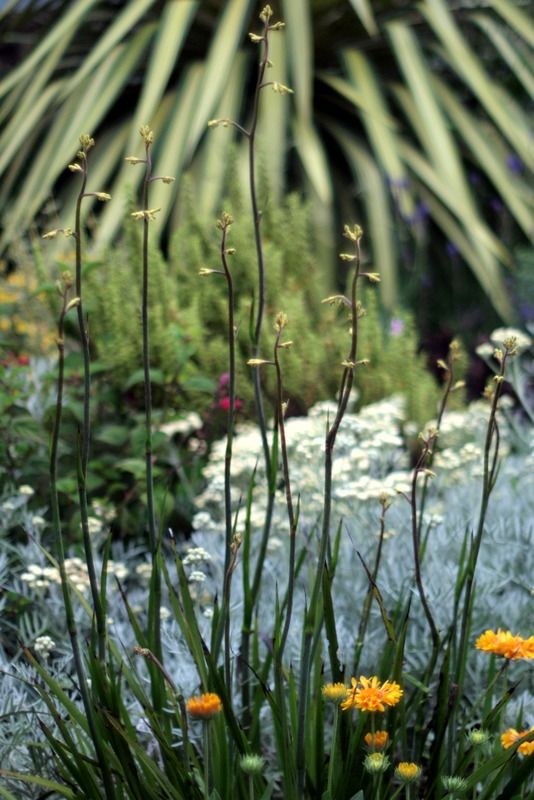
This chartreuse kangaroo paw’s flowers are not as flamboyant as the ‘Yellow Gem’ above, but as with all things chartreuse, they complement everything.
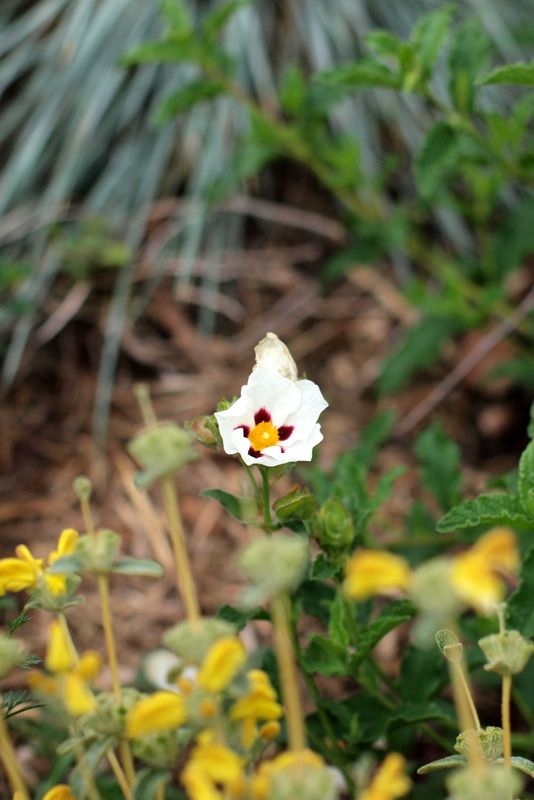
Cistus ‘Snow Fire’ is a smallish-growing shrub planted last fall that hasn’t made me wait long for blooms.

I’m envious of gardens with separate growing beds to trial plants and grow some on to a bigger size, like this Aloe marlothii x castanea hybrid, which is temporarily tucked in near the base of the ‘Yellow Gem’ kangaroo paws. But along with the endless lessons in patience the garden doles out, working with what you’ve got is another of its favorite recurring themes.

You always have such interesting plants, Denise. I had no illusions that my recently acquired Puya berteroniana would bloom anytime in the next few years but I admit I was hopeful about the Beschorneria until I saw your comment about the one at Annie’s. Is that a Yucca desmetiana I saw hiding behind the castor bean plant?
Yes, Kris, that’s the ‘Blue Boy’ yucca. I was up at 6 a.m. this morning, and Marty asks, What’s up? Well, spring, of course. I find these plants intensely interesting! Ten years ago, different plants held my interest, as I’m sure is the case for you.
Oh man, I loitered around the Puya section for a long time, and came home with none (I had a list, and a budget-my Annies strategy) though I managed to fill a flat.
Puya mirabilis does bloom young and easily, but prefers more water and more fertile soil than most others to grow/bloom well. Those big Beschorneria albiflora’s in the gardens outside the wall were planted by me some 6 years ago, and were simply truncheons from a client’s garden here in Oakland. They get enormous, up to 10 feet tall by more across.
David, so the outer besch in bloom at Annie’s are albiflora. I’ve got a small albiflora, so I’ll just forget about blooms for a half decade or so. The one I pictured above Annie sold as Martin Grantham hybrids. Thanks for the tips on the P. mirabilis. It’s in the back garden where the living is easier, instead of the front gravel garden.